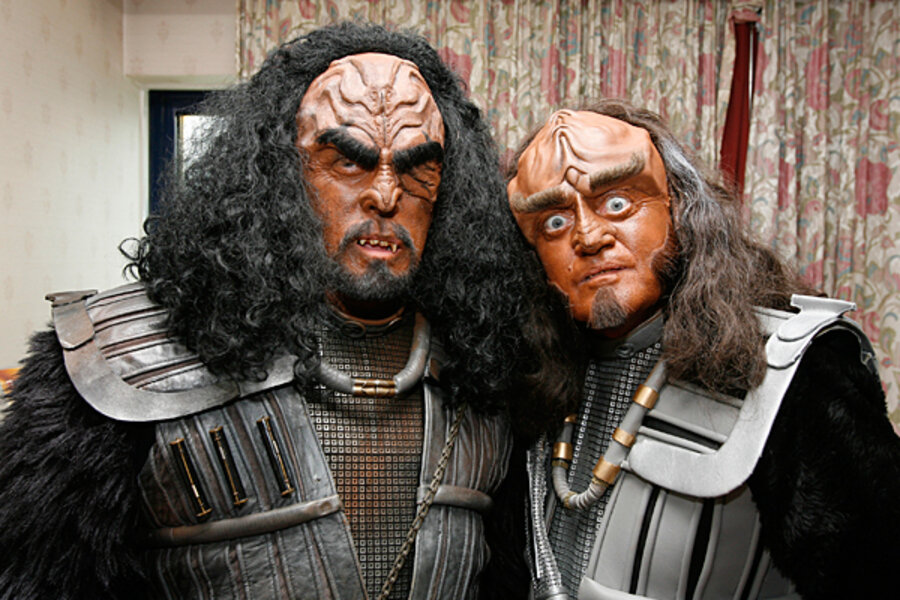Australian attraction to offer tours in Klingon language
Loading...
Australia's Jenolan Caves will soon offer the world's first audio tour voiced entirely in Klingon, the guttural language created for the popular "Star Trek" aliens with bumpy foreheads and a warrior's mentality.
On Aug. 22, the Klingon language will be one of three options added to the eight currently available for the self-guided audio tour through the "Nettle Cave." As many as 200,000 people pass through the chambers of this underground labyrinth annually, making it the most visited cave on the continent, Jenolan Caves Reserve Trust officials said in a statement.
"We are poised to boldly go where no other tourist attraction has gone before, with the first cave tour in the world to be available in the Klingon language," Reserve Trust officials said. [Star Trek Technologies in Real Life]
Two Klingon scholars from the United States visited the Jenolan Caves in early July, the officials added. After Michael Roney Jr., a professional Klingon translator based in Indianapolis, and science fiction author Tracy Canfield finalized the translation of the tour script, they joined forces in recording the new, properly harsh-sounding audio track.
Speaking in the alien language, Roney, who goes by the Klingonese name of "naHQun," remarked, "lH, qar'a'" in expressing the beauty of the caves.
The formation of these caves in the Blue Mountains of New South Wales dates back 340 million years, placing the subterranean limestone structure amongst the planet's oldest caves open to the public.
A place in 'Star Trek' lore
The Jenolan Caves have a long-standing association with the "Star Trek" universe. A transport vessel in a 1992 episode of the series "Star Trek: The Next Generation," was christened the U.S.S. Jenolan after the caves.
In the episode, titled "Relics," the Enterprise crew discovers that Montgomery "Scotty" Scott of the original "Star Trek" series (played by James Doohan) found a way to survive for 75 years aboard the wreck of the Jenolan on the surface of a solar system-size metal shell. Scotty is revived, whereupon the doughty engineer saves the Enterprise from certain destruction.
As a Klingon might say: "Qapla!" or "Success!"
Klingon culture
As modern, made-up languages go, Klingon has been extremely successful.
Marc Okrand, an American linguist, devised the discordant dialect for the first "Star Trek" movies. He later published the first edition of the Klingon Dictionary in 1985.
Since then, a Klingon Language Institute has sprung up, "Hamlet" and "Gilgamesh" have been translated, among other literary works, into Klingon, and now fans can even tweet in the fictional argot.
The Klingon language's sharp-looking letters have been sent into space as well. Last April, the characters graced NASA patches for the Window Observational Research Facility — a new Earth-observation post installed on the International Space Station.
A designer recognized that the acronym of the facility's name was WORF, which is the name of the most famous Klingon of them all, played by Michael Dorn in "Star Trek's" "The Next Generation" and "Deep Space Nine" series.
Dorn, along with actress Marina Sirtis, who portrayed Counselor Troi in "The Next Generation," will be attending the OzTrek3 event in Sydney Aug. 22, along with, as it turns out, staff from the Jenolan Caves.
Courtesy of the Caves' Federation-worthy effort, it will soon be possible to boldly spelunk where no Klingon has spelunked before.





